
Engelmann, Boston Journal of Natural History 6: 206, 1850
Holotype; Herbarium; Herbarium; Herbarium; Herbarium; Herbarium; Herbarium; Herbarium; Herbarium; Herbarium; Herbarium; Herbarium; Herbarium; Herbarium; Herbarium (O. macrorhiza-like); Herbarium; Herbarium Herbarium; Herbarium; Print (Britton and Rose, v1 1919, plate XXVIII); Print (Addisonia, 1916, plate 19); Print
See O. cespitosa, a similar eastern plant
O. pottsii can be mistaken for O. macrorhiza.
Original Description
What is Opuntia macrorhiza?
Opuntia macrorhiza is a small, prostrate prickly pear cactus, seldom reaching 40 cm in height though it may sprawl 1 m across. O. macrorhiza has a large geographic range, being found from New Mexico and Utah into Texas and north to Colorado as well as the Plains States and the Midwest. The authors have not observed O. macrorhiza in Arizona but it has been reported for that state. Possibly, reports of O. macrorhiza in Arizona are due to O. pottsii, a species that can be mistaken for O. macrorhiza.
Details
From Powell and Weedin
O. macrorhiza is a low, sprawling plant less than 30-40 cm high. Plants often have tuber-like swollen roots to 2.5 cm thick. Cladodes are wrinkled after the first winter, 7.5-13 cm long and 8-12 cm wide, oval, ellipsoid, or obovate. Often there are 1-3 main spines from areoles in the upper portions of pads. The lowest spine may be deflexed, whereas the other two project outward or upward. Spines are pale, often tan-white. Glochids are usually obvious and may be profuse.
Flowers are yellow with sharply defined orange or red centers. Stigmas are cream-colored or pale green as is the style. Flowers vary in size but may be 6 cm long and 5-8 cm in diameter. Filaments are cream-colored distally and greenish basally. Anthers are yellow. The pericarpel is slender and about 3 cm long. Fruits are variable throughout its large range and may be greenish, orange, or red with a sour taste. Some fruits are obovoid and 2-3 cm long and 1.5-2 cm in diameter with few and small areoles. Other fruits are clavate. Spines are rare on fruits. Seeds are irregularly shaped, 3-3.5 mm in diameter, 1.5-2 mm thick, notched at the hilum, and with a narrow margin to 0.5 mm.
O. macrorhiza is tetraploid.
Other Notes
O. macrorhiza is a variable and widespread cactus. In fact, several forms have been named including O. greenei, O. stenochila, O. macroflora, and perhaps more. All of these possible variants are included in our concept of O. macrorhiza here. They may actually represent discrete taxa or only minor variations. More study is needed. O. macrorhiza has always stirred controversy about its correct identification. New information suggests that the broad concept of O. macrorhiza presented here could be reconsidered.
Reports of O. macrorhiza in the Midwest and East may be due to O. cespitosa, a similar-appearing taxon.
Opuntia macrorhiza is a superb garden plant because it is tough, cold hardy, easy to grow, and not too large. The yellow flowers can be striking with their red centers. Additionally, many garden forms exist with pinkish and reddish flowers.

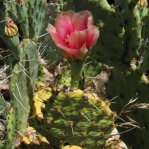
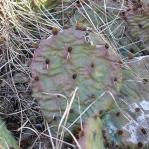
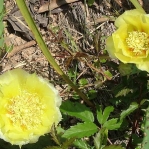
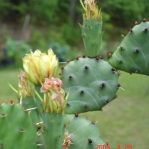
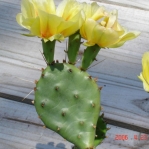
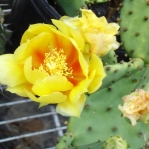
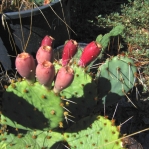
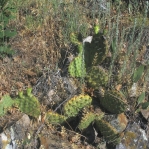
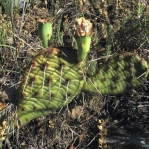
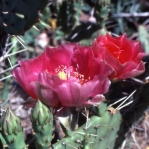
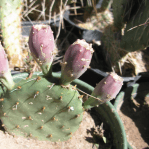
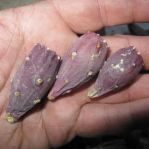
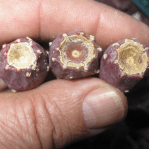
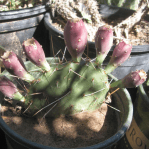
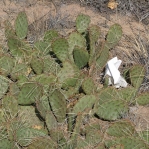
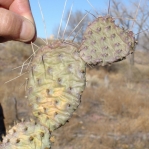

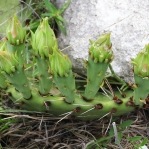
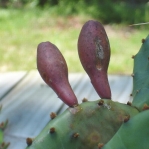
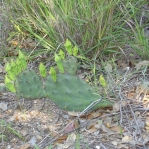
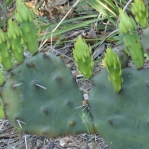
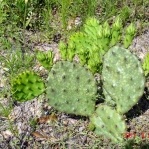
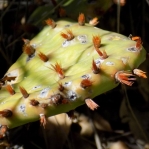
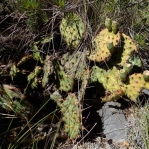
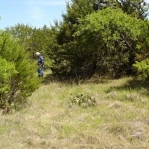
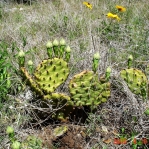
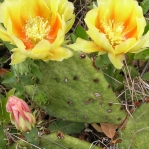
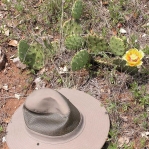
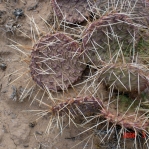
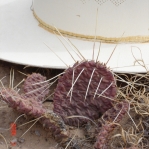
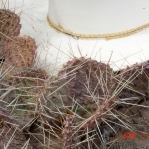
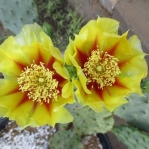
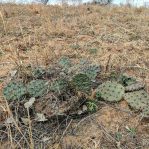
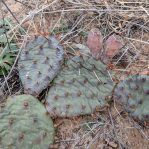
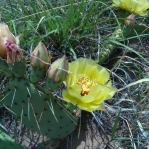
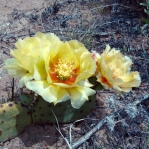
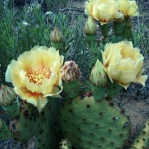
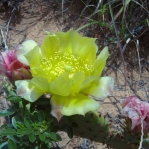
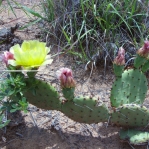
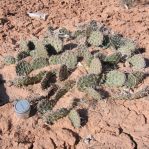
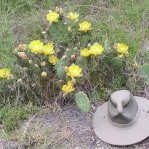
I saw what I thought was Opuntia Macrorhiza growing amongst pine trees at the spot east of Williams, AZ. When I grew it, it formed yellow flowers with reddish centers, unlike the red or purple that Pottsii is usually supposed to get. The plants were not infrequent (every 100 feet or so), and were rarely more than 3 pads high.
https://www.google.ca/maps/place/Mississauga,+ON/@35.2459441,-112.1416311,415m/data=!3m1!1e3!4m5!3m4!1s0x882b469fe76b05b7:0x3146cbed75966db!8m2!3d43.5890452!4d-79.6441198
Aarre Peltomaa
Arre,
We have not seen O. macrorhiza in Arizona, only O. pottsii. It would be great if you found O. macrorhiza. Do you have photos?
Joe Shaw